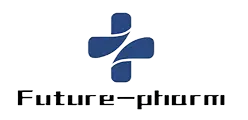
Maximizing Efficiency and Reducing Risks in Pharmaceutical Supply Chain Management
The pharmaceutical supply chain is a complex network that plays a crucial role in ensuring the timely and safe delivery of essential medications to patients around the world. As the global demand for pharmaceuticals continues to rise, the importance of maximizing efficiency while also reducing risks within this supply chain has never been more critical. Pharmaceutical supply encompasses everything from raw material procurement to manufacturing, distribution, and ultimately, patient access. Navigating this intricate landscape requires an understanding of various factors that can impact the flow of goods and information, highlighting the need for strategic management practices.
In an era where disruptions from regulatory changes, natural disasters, and unforeseen events can significantly hamper supply chain operations, stakeholders must adopt proactive measures to enhance resilience. By integrating advanced technology, optimizing logistics, and fostering collaboration among partners, organizations can not only streamline their processes but also ensure compliance and safety throughout the pharmaceutical supply chain. This blog will explore effective strategies and best practices that can help pharmaceutical companies achieve operational excellence while minimizing risks, ultimately leading to improved health outcomes for patients globally.

Strategies for Streamlining Pharmaceutical Supply Chain Processes
In today’s fast-paced pharmaceutical industry, streamlining supply chain processes is essential for maximizing efficiency and minimizing risks. One effective strategy involves the integration of advanced technology, such as Artificial Intelligence (AI) and Internet of Things (IoT), into supply chain management. By leveraging these technologies, companies can enhance visibility across their supply chain, allowing for real-time tracking of inventory levels and transportation logistics. This not only reduces delays but also helps in anticipating potential disruptions, enabling proactive responses that can save both time and money. Another critical approach for streamlining processes is collaboration among stakeholders. By fostering strong partnerships with suppliers, distributors, and logistics providers, pharmaceutical companies can create a more cohesive supply chain. Collaborative planning and shared data insights can enhance decision-making, improve demand forecasting, and ultimately lead to a more resilient supply chain. Regular communication and joint problem-solving initiatives can mitigate risks associated with supply chain interruptions, ensuring that all parties are aligned and prepared for any challenges that may arise. Additionally, implementing lean principles can significantly boost efficiency within the pharmaceutical supply chain. By identifying and eliminating wasteful practices, companies can enhance productivity and optimize resource utilization. Continuous evaluation of processes—such as shortening lead times, minimizing excess inventory, and refining production schedules—enables pharmaceutical firms to operate more effectively. This focus on lean methodologies not only contributes to a more streamlined supply chain but also supports better compliance with regulatory standards, further reducing risks in the pharmaceutical sector.

Leveraging Technology for Enhanced Supply Chain Visibility
In today's fast-paced pharmaceutical industry, leveraging technology for enhanced supply chain visibility is essential for maximizing efficiency and reducing risks. The integration of digital solutions can transform traditional supply chain operations, allowing companies to respond swiftly to changing market demands and consumer behaviors. The recent launch of Nestlé and Kidswant's digital supply chain center in China symbolizes this shift, demonstrating how digitalization is not just an option but a necessity for maintaining competitiveness.
As stakeholders across various industries, including pharmaceuticals, embrace cloud computing and data analytics, the collaboration between logistics giants like SF Express and Amazon Web Services exemplifies how digital tools can drive supply chain innovation. With AI and cloud solutions, companies can gain real-time insights into their supply chains, allowing for predictive analytics and improved decision-making. This visibility ensures that potential disruptions are identified early, minimizing risks and enhancing overall operational efficiency.
Furthermore, initiatives such as the full lifecycle software supply chain security governance platform developed by China Mobile highlight the importance of security in digital supply chains. As technology becomes increasingly intertwined with supply chain management, ensuring the integrity and security of digital transactions is vital for compliance and trust. The adoption of comprehensive cybersecurity measures will empower pharmaceutical companies to manage their supply chains more effectively, ultimately leading to improved patient outcomes and a more resilient market.

Identifying and Mitigating Risks in Pharmaceutical Logistics
In recent years, the pharmaceutical supply chain has become increasingly complex, necessitating a focus on identifying and mitigating risks within pharmaceutical logistics. With the industry's rapid evolution and the introduction of new asset management tools like public REITs, it is essential to understand the unique characteristics and audit points of the pharmaceutical sector. A recent report notes that the integration of real estate investment trusts (REITs) in healthcare, now scheduled for a significant offering on February 10, marks a pivotal shift in asset diversification strategies, which can potentially enhance the stability of pharmaceutical supply chains.
Pharmaceutical logistics encompasses various critical challenges, including regulatory compliance, transportation, and inventory management. A study from McKinsey emphasizes that approximately 25% of pharmaceutical companies face substantial delays due to logistics issues. These disruptions not only affect supply timelines but also raise significant risks concerning product integrity and patient safety. By implementing robust risk identification frameworks, companies can proactively address potential vulnerabilities within their operations, ensuring a smoother and more reliable supply chain.
Moreover, the diversification of asset types in the pharmaceutical industry enhances liquidity and operational resilience. As the recent trends in REITs highlight, companies are increasingly exploring opportunities to invest in healthcare facilities and distribution centers. This strategic expansion not only provides financial benefits but also streamlines the supply chain, ensuring that pharmaceutical products are transported efficiently and securely. By focusing on risk mitigation strategies, the industry can safeguard against potential disruptions while maximizing efficiency across the logistics network.

Best Practices for Inventory Management in Pharma Supply Chains
In the pharmaceutical industry, effective inventory management is crucial for maximizing efficiency and minimizing risks throughout the supply chain. Recognizing the volatile nature of demand and the regulatory complexities, pharmaceutical companies must adopt best practices that promote accuracy and responsiveness. Implementing sophisticated inventory tracking systems can help organizations maintain optimal stock levels, ensuring that essential products are available when needed while reducing the risks associated with overstocking or stockouts.
Moreover, collaboration across the supply chain is vital for enhancing visibility and streamlining operations. By fostering partnerships with suppliers and distributors, companies can improve forecasting accuracy, enabling them to respond quickly to changes in market demand. Additionally, utilizing data analytics to monitor inventory turnover and shelf life can significantly enhance decision-making processes, allowing organizations to make informed choices about restocking and distribution.
Finally, investing in technology, such as automated inventory management systems, can further drive efficiency. These tools enable real-time monitoring and provide insights that facilitate proactive management of supplies. By employing such strategies, pharmaceutical companies can not only optimize their inventory practices but also mitigate risks associated with compliance and market fluctuations, ultimately ensuring a robust and resilient supply chain.
Collaboration and Communication: Keys to Supply Chain Success
In the fast-paced world of pharmaceutical supply chain management, collaboration and communication are paramount to success. Effective collaboration between manufacturers, distributors, and healthcare providers ensures that every stakeholder is aligned with the shared goal of delivering safe and effective medications to patients. By fostering strong partnerships, companies can leverage each other’s strengths, streamline processes, and enhance the overall efficiency of the supply chain. This interconnected approach not only reduces delays but also helps in responding swiftly to any disruptions that may arise.
Moreover, transparent communication within the supply chain is essential for identifying potential risks early on. Utilizing advanced communication technologies, stakeholders can share real-time data on inventory levels, production timelines, and regulatory compliance issues. This proactive communication helps in anticipating challenges, allowing companies to mitigate risks before they escalate. Furthermore, regular updates and feedback loops create an atmosphere of trust and accountability, ensuring that all parties remain informed and engaged. When everyone is on the same page, the supply chain operates more smoothly, ultimately benefiting end-users.
By prioritizing collaboration and communication, pharmaceutical companies can significantly enhance their supply chain management. The result is a more resilient supply chain that not only maximizes efficiency but also adapts effectively to the ever-changing landscape of the pharmaceutical industry. Embracing these principles leads to better outcomes for all stakeholders involved, particularly the patients who depend on timely access to their medications.
